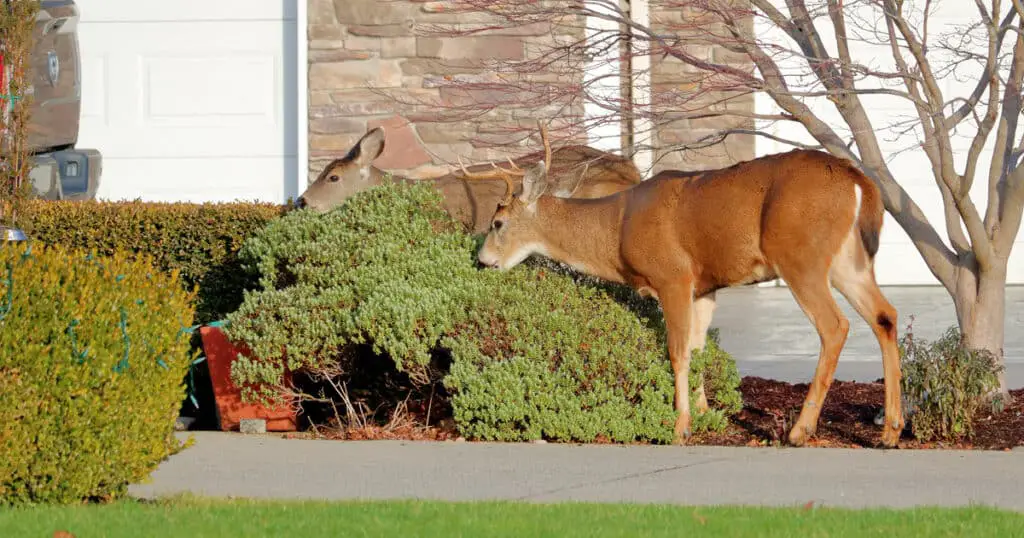Shrubs are a mainstay and foundation plant for beds and borders on many properties. They’re great for increasing your home’s curb appeal. But if you live in an area with a large deer population, you need shrubs that these animals won’t eat. Deer-resistant shrubs are exactly what we’ll talk about here, so keep reading.
Let’s discuss some of the most deer-resistant shrub varieties, their growing zones, and more information to help you make the best decisions for your property.
List of Deer Resistant Shrubs
Here’s our list of deer-resistant shrubs. Choose one that is appropriate for your region and lifestyle.
Chinese Juniper
Chinese juniper is one of the most popular deer-resistant shrubs. This is a needled evergreen with a scent that deer dislike.
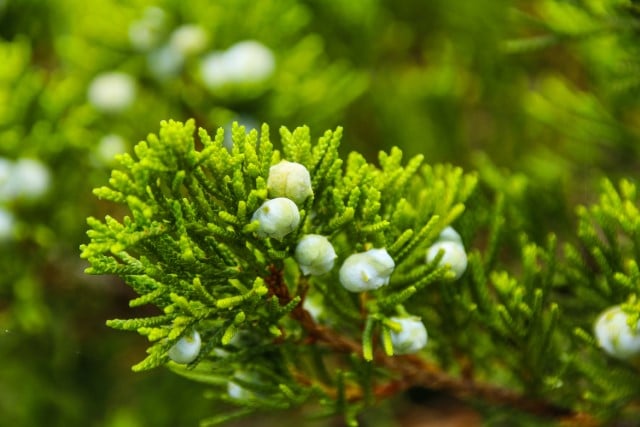
Just make sure you choose a shrub variety of Chinese juniper, as there are tall tree varieties available, too.
The Chinese juniper shrub is quite easy to maintain, as it can thrive in dry soil and even drought conditions.
If you live in USDA hardiness zones 4 through 9, you should have success with Chinese juniper. Plant your Chinese juniper in soil that has a slightly acidic or neutral pH.
Mountain Laurel
If you’re looking for a large shrub that will grow tall (even as high as 15 feet), mountain laurel may be a good choice.
Mountain laurel grows more slowly than other deer-resistant shrubs, though, so you’ll have to be a patient gardener.
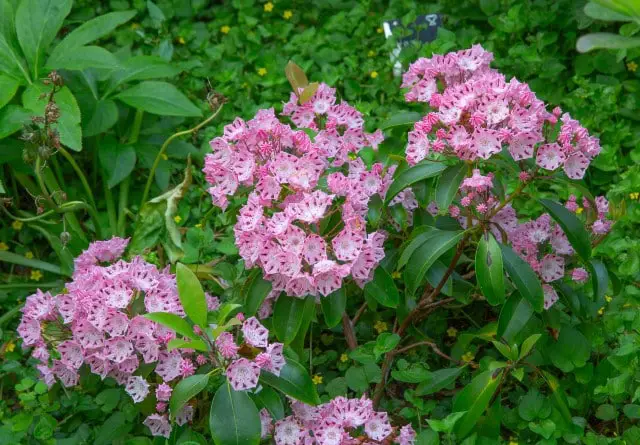
This shrub does best in partial shade. Plant it in soil with a slightly acidic pH. The mountain laurel grows lovely clusters of pale pink flowers.
Mountain laurel flowers appear in late spring.
This shrub does well in USDA zones 5 through 9. This is a popular plant in those regions.
Japanese Pieris
Do you want a deer-resistant shrub with extensive flowering? Check out the Japanese pieris. This shrub has impressive clusters of white flowers.
The Japanese pieris thrives in partial shade. It should also do well even in deep shade.
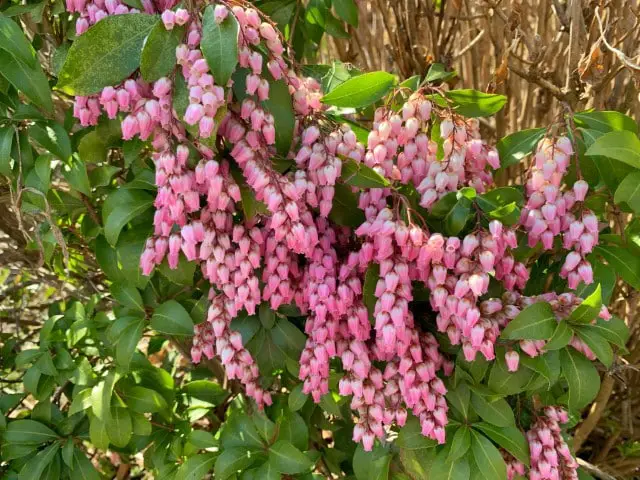
The Japanese pieris is known for attracting pollinators. When it comes to USDA growing zones, the Japanese Pieris is suitable for zones 5 to 9.
Russian Sage
Like many of the other shrubs listed here, the Russian sage helps keep deer away with its strong fragrance.
This beautiful shrub with lavender-blue flowers gives your garden a wildflower garden look. Russian Sage is easy to plant as it doesn’t need fertilized soil.
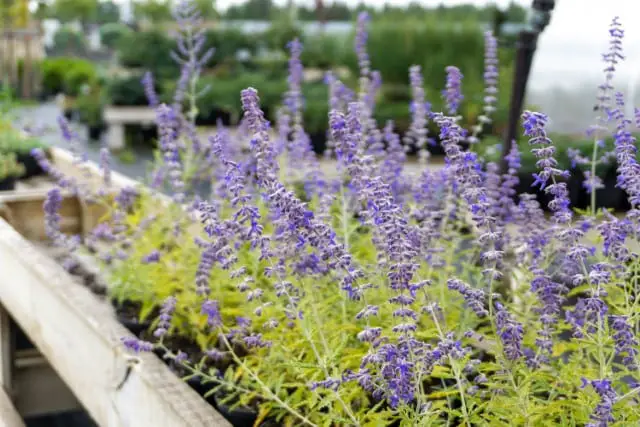
In fact, it tends to do best if the soil isn’t fertile. This shrub does need full sun, however. The soil should be dry and well-drained.
The Russian Sage can grow as high (and wide) as 3 feet when it’s mature.
Do you live in USDA hardiness zones 5 through 9? You should have success growing Russian sage in your garden.
Butterfly Bush
The butterfly bush is one of the prettiest deer-resistant bushes you’ll see anywhere. As implied by its name, butterfly bushes attract butterflies.
They may also bring hummingbirds into your garden. The butterfly bush’s flowers have a strong smell, which helps keep away deer.
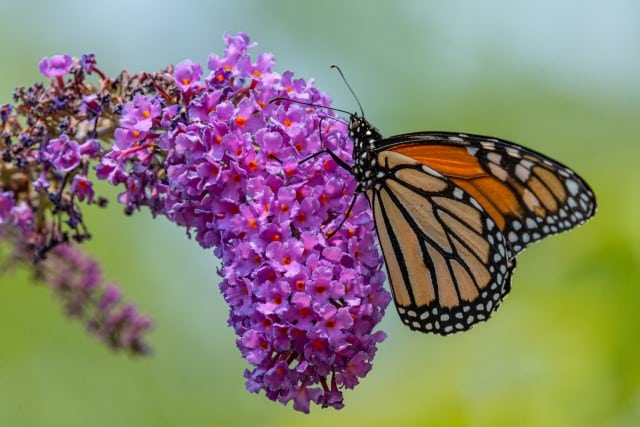
There are different species of butterfly bush available, and the type that is best for you may depend on your USDA plant hardiness or growing zone.
If you live in a zone between 5 and 9, you can probably plant almost any kind of butterfly bush.
Spireas
If you appreciate golden shades, you will enjoy having Spirea shrubs in your garden. This plant has leaves with a unique yellow and golden color.
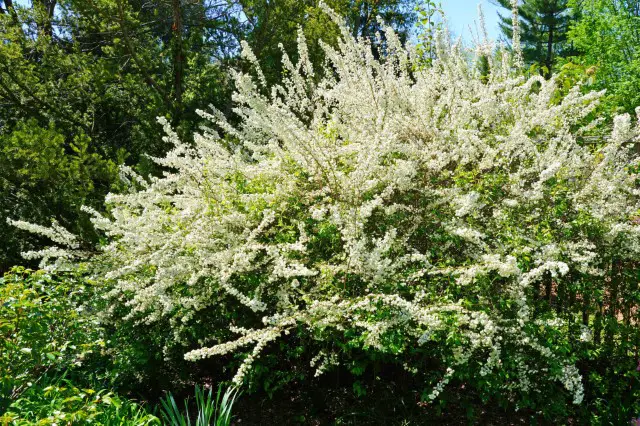
More importantly, deer dislike this plant and it will help keep them away. Spirea is an especially great choice as a shrub for a border garden or rock garden.
This shrub grows well anywhere from USDA hardiness zones 4 through 8. This is a hardy plant overall, able to deal with many challenges such as drought, excessive cold, heat, or humidity, and low-nutrition soil.
Bluebeard
The Bluebeard plant is a popular shrub for busy homeowners without a lot of free time for garden maintenance. This shrub is famous for being able to withstand dry soil and hot weather.
The flowers that grow on this shrub are one of its biggest attractions, as they feature a bluish violet color.
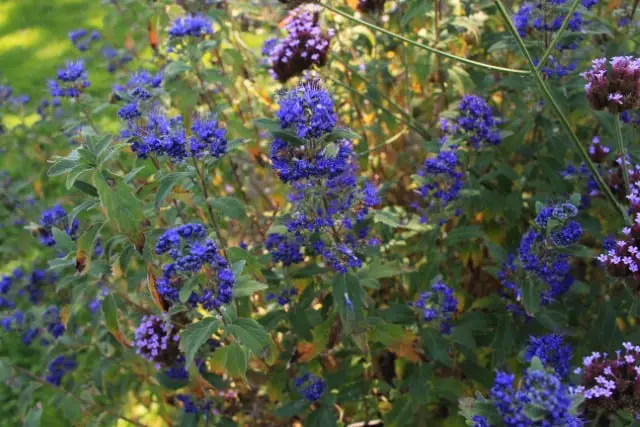
The bluebeard’s flowers start growing in the later parts of the summer. They continue to bloom into the fall.
Zones 5 to 9 are the best regions of the country for growing bluebeard. You can have thriving Bluebeard shrubs in both partial and full sun.
Make sure the soil never gets soggy, always keeping it well-drained. Bluebeard plants can grow as tall as 4 feet, and as wide as 3 feet.
Inkberry Holly
Inkberry holly helps repel deer from your property.
An evergreen shrub in the broadleaf category, this plant grows white flowers with a green tint. This shrub is best suited for USDA zones 4 through 10.

It’s best to plant this shrub in soil with an acidic pH. The soil should be well-fertilized and stay moist at all times.
Make sure your inkberry holly gets partial to full sun. You can expect your inkberry holly to grow as tall (and wide) as between five and eight feet.
There are some inkberry varieties, however, that grow smaller. Find out which variety you have before you plant it.
Bayberry
Bayberry does well in USDA zones 3 through 7.
This is a deer-repellent shrub, and it’s quite low maintenance in that it can deal with both moist and dry soil. Plant your bayberry somewhere ranging from partial shade to full sun.
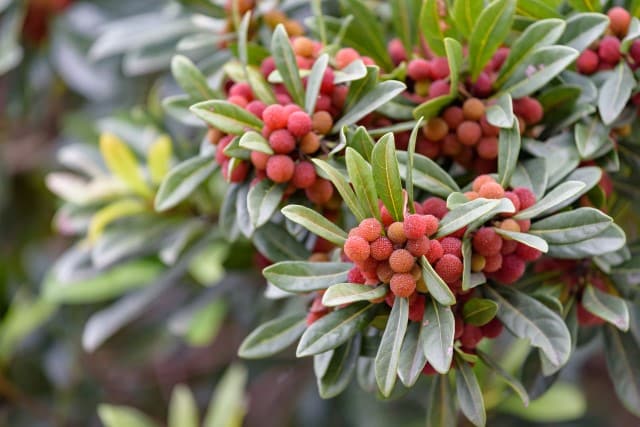
Ensure the soil pH ranges between 6 and 7.5. You can expect tiny greenish-yellow flowers to grow on your bayberry shrub, but they’re not particularly noticeable.
Arrowwood Viburnum
Arrowwood viburnum flourishes between USDA zones 2 and 8.
You can grow this shrub in either partial shade or full sun. It can do well in a range of soil moisture levels.
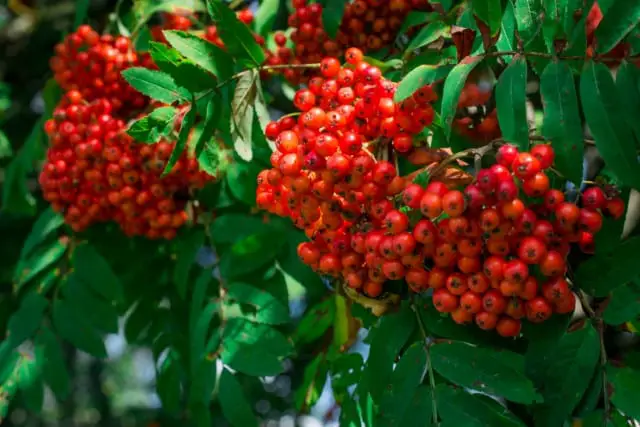
For example, you can plant it in well-drained soil, in average moisture soil, or in medium moisture soil. Stay away from extremely wet soil, though.
You’ll have to do annual (at minimum) pruning if you want to keep this shrub’s height under control. Wait until flowering is finished before you do this, though.
Deer dislike arrowwood viburnum, so you can use it as a deer-resistant plant for your property.
Golden Sword Yucca
The Golden Sword Yucca is a deer-resistant shrub that you can grow in USDA hardiness zones 4 through 10. This plant needs full sun to partial shade.
When it comes to the soil, the pH should range somewhere between 5.5 and 8.5. The best type of soil ranges from partial clay to primarily sand.
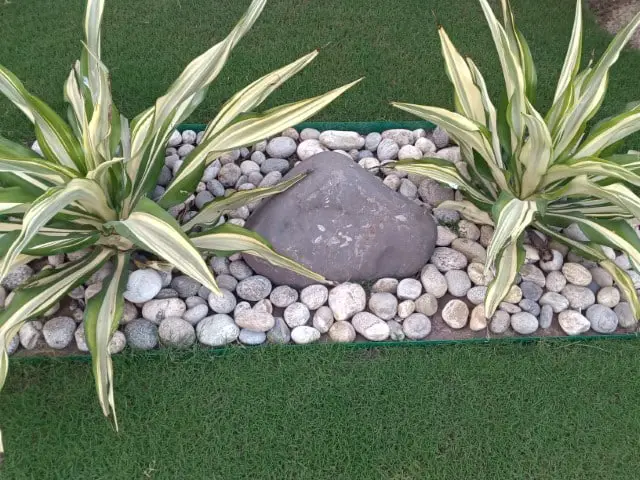
This shrub will grow to between 2.5 feet and 3 feet in width, and its height ranges between 2.5 and 3 feet.
The Golden Sword Yucca is an evergreen plant with a coarse leaf texture. The white flowers are large and an attractive feature of this plant.
Flowering Quince
The flowering quince is one of the deer-resistant shrubs with the prettiest flowers. In many cases, the flowers on the flowering quince are a soft reddish color shade.
There are other flower colors seen on flowering quince too, including white, red, bright red, orange, and more. Fruit also grows on this shrub.
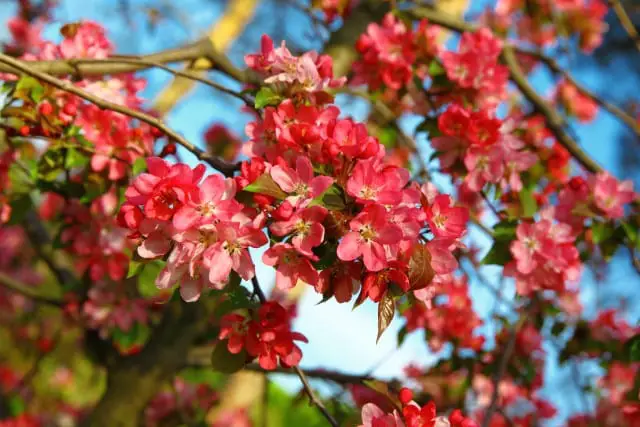
The flowering quince shrub grows in an impressive rounded shape that makes for a striking appearance. It works effectively as a barrier against deer.
Make sure you plant flowering quince in soil with a pH that ranges between neutral and acidic.
Oregon Grape Holly
The best USDA zones for Oregon grape holly are zones 5, 6, and 7. This plant needs acidic soil, which can be either well-drained or moist.
The Oregan grape jolly grows deciduous foliage. This means the leaves will fall off and re-grow once a year.
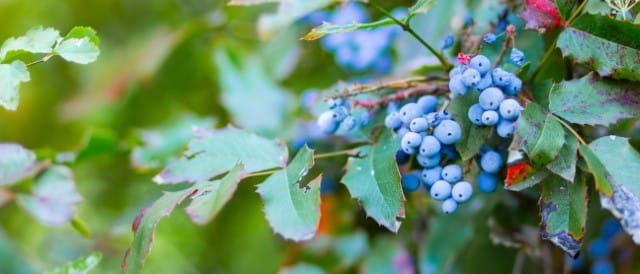
Yellow flowers grow on the Oregon grape holly, and the fragrance of these flowers is part of what helps keep deer away from your property.
This plant can grow in either full shade or partial sun. Compared to many of the other deer-resistant shrubs we’ve discussed here, this is a smaller shrub. It grows to about 3 feet when mature.
Wrap Up: Deer Resistant Shrubs to Plant In Your Garden
As we’ve seen here, there are plenty of choices when it comes to deer-resistant shrubs you can add to your property.
Go with one that is appropriate for your USDA hardiness zone. You also need a shrub that fits your lifestyle and how much time you can devote to maintenance and upkeep.
Have any tulips in your garden? They’re one of the whitetail deer’s favorite snacks!
Planting deer-resistant shrubs and other plants will help keep those pesky cervids away.

